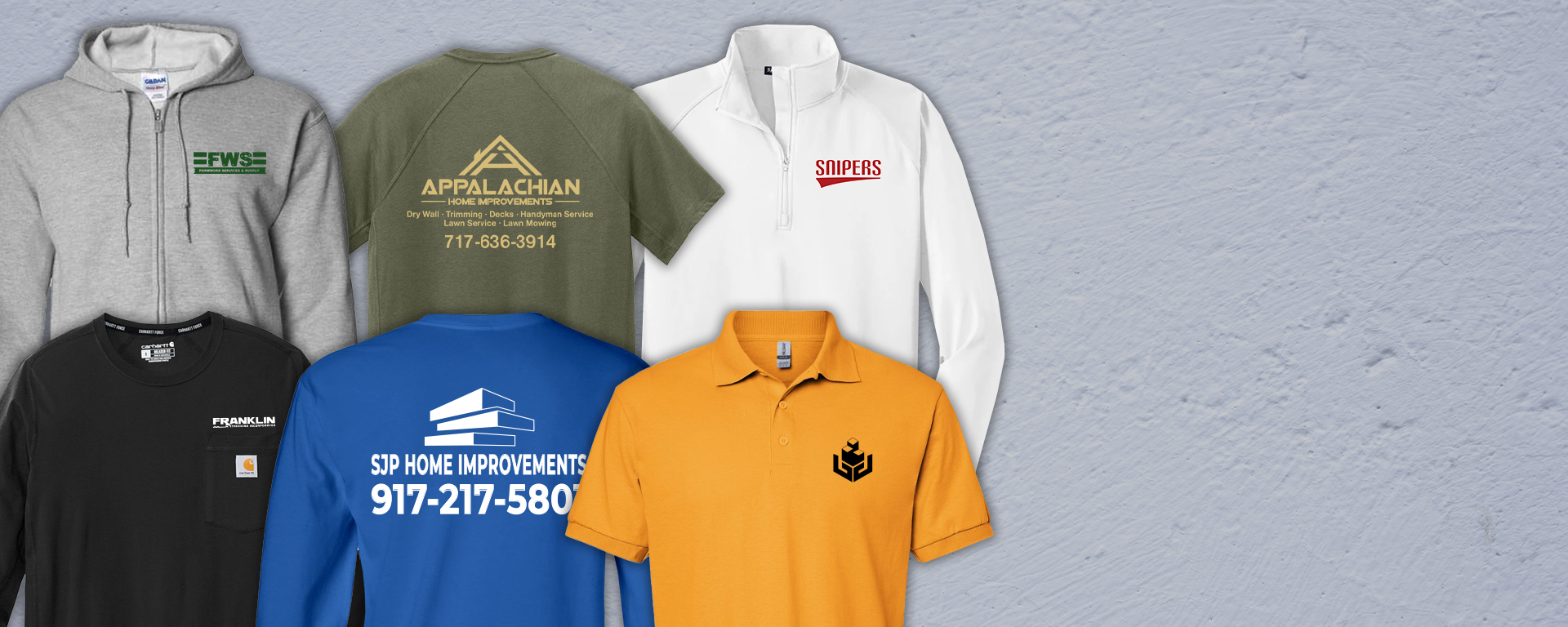How Fabric Choices in Branded Clothing Affect Comfort and Style
How Fabric Choices in Branded Clothing Affect Comfort and Style
Blog Article
Understanding Apparel: The Significance of Textile Choices in Your Closet
The selection of material in clothing plays an essential duty in both aesthetics and functionality. Different products provide varying degrees of comfort, breathability, and longevity, straight influencing the user's experience. Recognizing these nuances can enhance one's closet markedly. Yet, several neglect exactly how these choices can affect not just personal design, but also sustainability. What fabric decisions could redefine your wardrobe and align it with both design and duty?
The Role of Textile in vogue and Performance

Usual Fabric Types and Their Qualities
When picking clothes, comprehending the characteristics of usual material types is essential for making educated options. Cotton, a widely-used all-natural fiber, is known for its soft qualities, versatility, and breathability, making it appropriate for sportswear and daily garments. Bed linen, an additional all-natural alternative, boasts superb moisture-wicking properties and a distinct texture, suitable for warm climates.Wool, frequently favored for its heat and toughness, differs in excellence; merino woollen is soft against the skin, while coarser kinds are made use of for outerwear. Synthetic materials like polyester and nylon use sturdiness and resistance to creases, making them prominent for activewear and traveling garments. Finally, blends, which combine all-natural and artificial fibers, can improve performance while maintaining convenience. By acknowledging these material features, individuals can choose garments that aligns with their way of living and visual choices.
Breathability and Convenience: Selecting the Right Fabrics for Various Climates
Selecting the ideal materials for various environments can significantly boost comfort and total wearability. Breathable materials are essential in hot climates, as they permit air blood circulation and moisture dissipation. Fabrics such as cotton, bed linen, and moisture-wicking synthetics effectively attract sweat away from the body, maintaining the wearer cool and dry. On the other hand, in cooler climates, thicker fabrics like wool or fleece provide insulation while maintaining breathability, making sure warmth without overheating.Additionally, the selection of textile weight plays an essential duty; lightweight textiles are more effective for summer, whereas heavier options are matched for winter months wear. Understanding the one-of-a-kind buildings of each textile enables individuals to clothe appropriately for varying weather condition problems. Inevitably, picking breathable and comfortable fabrics tailored to details environments can significantly enhance day-to-day comfort and improve the total experience of using clothing.
Sturdiness and Treatment: Exactly How Material Affects Long Life of Your Wardrobe
Selecting the best products can substantially affect the resilience and treatment needs of a wardrobe. Fabrics such as cotton and polyester are understood for their durability and simplicity of maintenance, making them excellent for everyday wear. On the other hand, fragile materials like silk and shoelace call for more careful handling and specialized cleansing techniques, which can enhance the moment and effort needed for care. Branded Clothing.Durability is likewise affected by the textile's weave and surface; tightly woven fabrics often tend to stand up to damage better than freely woven choices. Additionally, artificial blends often supply boosted resilience, incorporating the most effective qualities of multiple fibers.Understanding the treatment instructions for each and every fabric is crucial, as improper washing or drying out can lead to early wear. Eventually, picking sturdy materials can lead to a longer-lasting wardrobe, decreasing the regularity of replacements and adding to an extra sustainable fashion choice
The Influence of Textile on Fit and Shape

Lasting Textile Selections: Making Eco-Friendly Decisions
The impact of fabric prolongs beyond fit and shape to incorporate ecological factors, motivating a growing interest in lasting fabric selections. Green textiles, such as natural cotton, hemp, and Tencel, are gaining grip amongst customers who prioritize sustainability in their wardrobes. These products are frequently created with less chemicals and water, lowering their ecological footprint.Additionally, recycled materials, made from post-consumer waste, provide an ingenious option to the textile industry's contamination issue. Brands significantly accept openness in their sourcing techniques, permitting consumers to make informed choices concerning their purchases.Choosing sustainable materials not just supports moral methods however additionally motivates the apparel industry to take on even more responsible manufacturing methods. As awareness of environmental concerns increases, people are prompted to review the lasting impact of their material choices, fostering an activity in the direction of an extra eco aware and sustainable technique to style.
Raising Design: Exactly How Fabric Can Change an Outfit
While numerous might focus on shade and cut when choosing a clothing, the selection of textile plays a necessary duty in boosting design and improving overall appearance. Various materials convey distinctive state of minds and messages; for instance, silk radiates high-end and elegance, while denim supplies an informal, unwinded vibe. The structure and drape of a fabric can drastically change the silhouette, with structured materials offering a polished look and softer ones creating an extra fluid, unwinded aesthetic.Moreover, the weight of the fabric influences wearability throughout seasons. Lightweight textiles like bed linen and cotton are excellent for summertime, while much heavier materials such as Clicking Here wool and velour offer warmth and beauty in colder months. Recognizing fabric residential or commercial properties, such as breathability and stretch, also equips people to make informed options that enhance convenience without compromising design. Inevitably, the appropriate fabric can change an outfit from normal to extraordinary, making it an essential consideration in any wardrobe.
Frequently Asked Concerns
Just how Do I Determine the Fabric Material of My Clothing?
To determine material web content, one can analyze treatment labels, conduct melt examinations for fiber identification, or consult material examples. These techniques assist separate materials, ensuring informed options for apparel treatment and upkeep in day-to-day wear.
Can Material Choice Affect My State Of Mind or Self-confidence?
Material selection can greatly impact an individual's mood and self-confidence. Branded Clothing. Certain products might evoke feelings of comfort or style, while others can really feel restrictive or unflattering, eventually influencing self-perception and psychological health throughout the day
What Fabrics Are Best for Sensitive Skin?
For individuals with sensitive skin, all-natural textiles like cotton, bamboo, and linen are usually advised. These products are breathable, hypoallergenic, and much less most likely to create irritation, making them suitable selections for convenience and skin wellness.
Just how Do I Correctly Wash and Take Care Of Different Fabrics?
To properly clean and care for various textiles, one have to consider each product's specific needs, including temperature level setups, detergents, and drying techniques, guaranteeing durability and keeping the material's original high qualities for perfect use.
Exist Details Fabrics for Athletic or Performance Use?
Sports or efficiency wear commonly utilizes fabrics such as spandex, polyester, and nylon. These products are created for moisture-wicking, breathability, and versatility, boosting movement and comfort during physical activities while giving durability and support. Conversely, in colder environments, thicker fabrics like woollen or fleece give insulation while preserving breathability, making sure heat without overheating.Additionally, the choice of material weight plays a vital role; light-weight textiles are preferable for summer season, whereas much heavier choices are fit for winter wear. In comparison, fragile products like silk and shoelace need more mindful handling and specialized cleansing techniques, which can enhance the time and initiative needed for care.Durability is likewise affected by the material's weave and finish; snugly woven textiles tend to withstand wear and tear better than loosely woven choices. In comparison, stiff materials can restrict motion but provide a classic, sleek look.Moreover, the density and structure of the fabric can affect the aesthetic perception of body form. The influence of material prolongs beyond fit and silhouette to encompass ecological elements, motivating a growing rate of interest in sustainable textile options. The appearance and drape of a fabric can drastically modify the shape, with organized materials giving a refined look and softer ones creating a more fluid, loosened up aesthetic.Moreover, the weight of the material influences wearability across you can try these out seasons.
Report this page